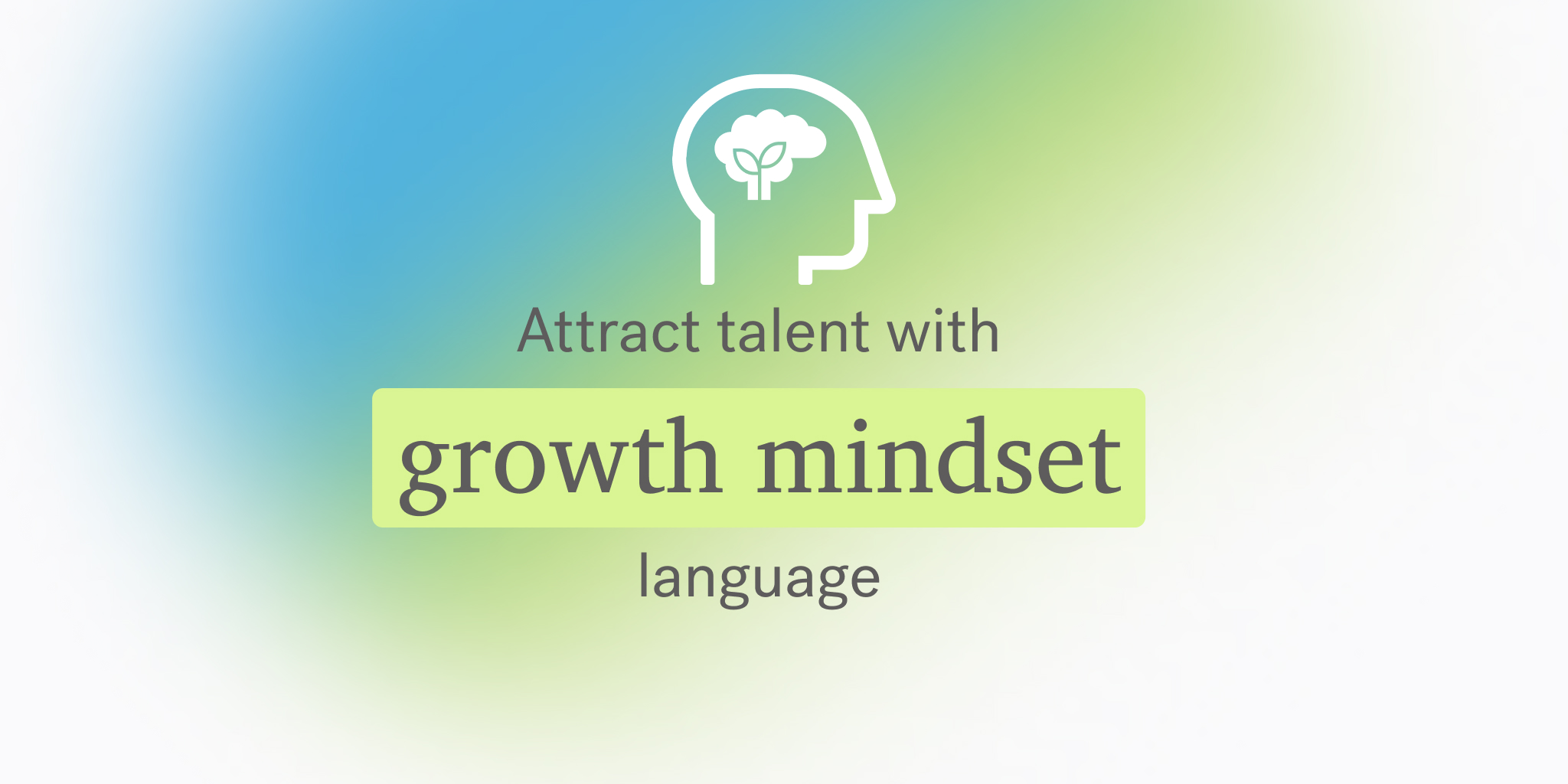Attract talent with a growth mindset

Do you believe that skills can be developed through continuous effort and dedication? That’s the underlying question behind the concept of growth mindset. And, it's a really important consideration in all recruiting language: job descriptions, employer brand content, and one-on-one interactions with candidates. How we talk about talent, skills, and development plays a significant role in who applies to work at your company.
Not only are there benefits to using growth mindset language, but there are also costs associated with using too much fixed mindset language. Growth mindset language is generally more engaging and appeals to a broader range of candidates. Fixed mindset language does the opposite, and can even result in talent self-selecting out of the application process. This is especially relevant for certain demographic groups, usually those that are already most underrepresented in that company or industry.
Without mindfulness of our language, our job posts can result in a narrower talent pipeline applying to our open roles. It can also slow down our search. Textio’s research has shown that job posts with fixed mindset language tend to fill more slowly. So what is growth mindset language? And how do you know if you’re using it?
What is growth mindset language?
According to Carol Dweck, the psychology researcher who first introduced growth mindset, it describes “individuals who believe their talents can be developed through hard work, good strategies, and input from others.” And when it comes to our work, it’s the degree to which this mindset is present in the day-to-day culture and practices of the company.
But, even Dweck agrees that the term has become a hyped-up buzzword in most organizations. We talk about it a lot, but then we default back to fixed notions of talent, skills, and capabilities, especially in hiring. That could be because we may think that we're already employing a growth mindset, which ironically is a fixed mindset at its finest. Growth is continuous, even around the notion of growth mindset itself. Our work is never complete, we have to keep staying mindful of how we're communicating and the language we're using to attract talent.
Language is the primary way that we can demonstrate an organizational commitment to growth in our recruiting content, and that’s why growth mindset language is so fundamental to a great job post or careers page. Knowledge is important, but not as important as the application of that knowledge. It’s what we do with our understanding of growth mindset that counts. In other words, the actions we take and the words or phrases that we use in all of our recruiting content.
What are some examples of growth mindset language?
Growth mindset starts with our beliefs about talent. Before even getting to the language that we use, it’s important to first understand if our core beliefs about what's needed for a role tracks with our desire to embody a growth mindset as a culture. This extends beyond our language to things like requirements that we list in job posts. Does that next sales or customer service hire truly need at least 5 years of experience to succeed in the role? Keeping growth language and practices at the center of our recruiting efforts can help us become more inclusive.
When it comes to the actual language in the job post, a growth mindset is really important to pay attention to. If you’ve ever used words like “brilliant,” “genius,” or “intelligent” in recruiting content, then you’ve used fixed mindset language and may have turned away more than a few qualified candidates. But, don’t be too hard on yourself, some of these phrases are so ubiquitous that we don’t question them anymore. The important thing is to stay more mindful of where you can use growth mindset language in future recruiting content. Especially if you’re trying to attract a diverse pool of candidates to your open roles, then growth-mindset language is a habit to invest in deeply.
Below are 10 examples of common fixed mindset phrases that are often found in recruiting content (especially job posts) with alternatives to try instead. In 2016, Textio and Paradigm found that jobs where women were hired were twice as likely to use growth mindset language, and those findings hold true across many demographics today. Using growth mindset language is an easy place to start improving all of your recruiting content.
Examples of fixed mindset language vs. growth mindset language
| Fixed mindset language | Growth mindset language |
| "talent" | "dedicated" "hard-working" |
| "a high performer" | "a hard-working" "a successful" "an impactful" |
| "a knack for" | "an interest in" "a curiosity about" |
| "have what it takes" | "are equipped" "have the courage to" "have the determination to" |
| "overachiever" | "hard worker" "multitasker" |
| "rockstar" "ninja" | "passionate person" "thoughtful person" "influencer" |
| "smart" "genius" | "inquisitive" "thoughtful" "sensible" |
| "superstar" | "hardworking" "futurist" |
| "natural" | "strong" "effective" "great" |
| "effortlessly" | "admirably" "smoothly" "thoughtfully" |
Growth mindset language is as important as ever in recruiting and impacts business results—like time-to-fill and cost per hire. To recruit candidates inclusively, boost the amount of growth-mindset language you’re using, and get rid of fixed-mindset phrases. That way you engage prospective applicants and reinforce growth mindset in your company’s culture.
This topic and much more was covered in our 2022 Recruiting and inclusion report, you can access the full report here for more insights.